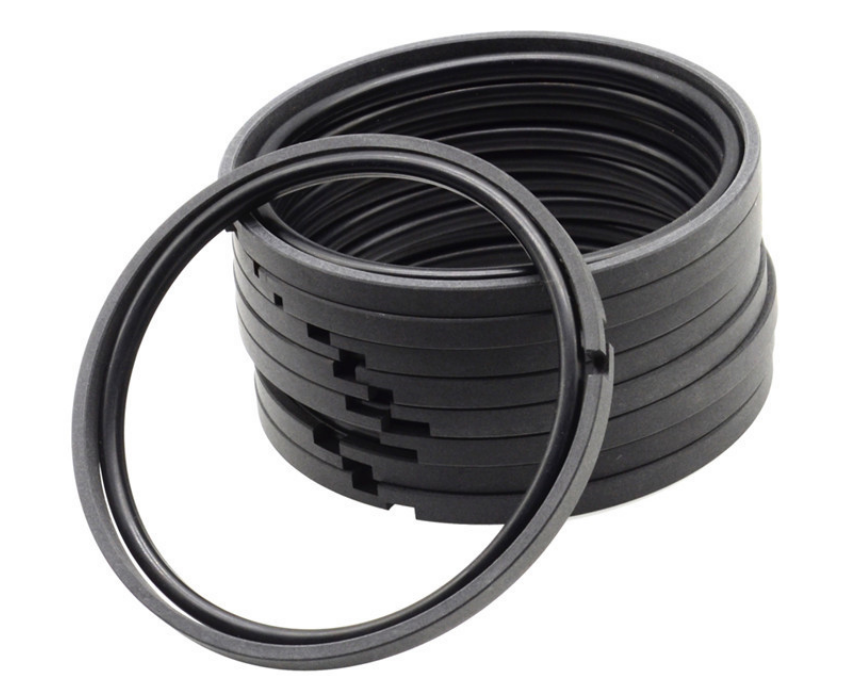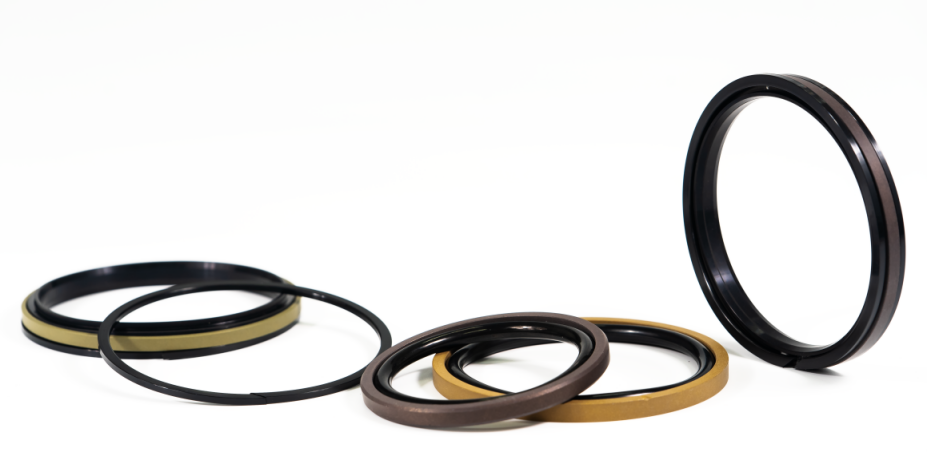Piston rings are essential components within internal combustion engines, crucial for sealing the combustion chamber, managing oil usage, and aiding in heat dissipation. Their effectiveness significantly influences engine efficiency, power delivery, and overall durability. Industry statistics indicate that worn or incorrectly installed piston rings can diminish engine power by 20-30% and elevate oil consumption by 25%. Precisely cutting piston rings to exact specifications ensures they fit perfectly, optimizing engine compression while minimizing friction and wear. This meticulous fitting process is essential for sustaining top-tier engine performance, enhancing fuel economy, and reducing harmful emissions, underscoring its pivotal role in both engine upkeep and production processes.

Understanding Piston Rings
Definition and Role in the Engine
Piston rings are critical components of internal combustion engines. They are located in the grooves of the piston and serve several essential functions. Primarily, they seal the combustion chamber, preventing the leakage of gases during the combustion process. This sealing capability ensures that maximum pressure is applied to the piston, optimizing the engine's power output. Additionally, piston rings regulate oil consumption by scraping excess oil from the cylinder walls and facilitating heat transfer from the piston to the cylinder, aiding in maintaining optimal operating temperatures.
Types of Piston Rings
There are two main types of piston rings: compression rings and oil control rings. Compression rings are located at the top of the piston and are responsible for sealing the combustion gases and transferring heat. Oil control rings, situated below the compression rings, manage the oil film on the cylinder walls, ensuring sufficient lubrication while preventing excess oil from entering the combustion chamber. This dual functionality is crucial for maintaining engine efficiency and longevity.
Materials Used
Piston rings are typically made from materials such as cast iron, steel, and various alloys. Cast iron is favored for its excellent wear resistance and ability to retain lubricants. Steel and steel alloys are also commonly used due to their strength, durability, and resistance to high temperatures. Advanced materials and coatings are often applied to enhance these properties, ensuring the rings can withstand the extreme conditions within the engine.
JSPSEAL Cutting Piston Rings Advantages
Enhanced Performance and Reliability
JSPSEAL offers significant advantages in the cutting and manufacturing of piston rings. One of their key products is a double-acting seal capable of passing over ports, enhancing its versatility and functionality. The Nylon sealing face features a step-cut joint, facilitating easy installation, and includes a rubber energizer to ensure a secure fit. With nearly 20 years of experience in the aftermarket, JSPSEAL understands the demands placed on seals under challenging conditions and ensures their products meet these requirements.
Quality Assurance and Global Excellence
Precision molds used in the production process guarantee accurate sizing of the piston rings, while the use of original imported raw materials ensures superior mechanical properties. JSPSEAL's extensive export experience, spanning over a decade, helps address various transportation challenges, ensuring reliable delivery. The company's commitment to fast and efficient lead times further enhances the appeal of JSPSEAL parts in the global market.
Factors Influencing Cutting of Piston Rings
Engine Specifications
The cutting of piston rings must consider the specific engine specifications, including the cylinder bore diameter and stroke length. These dimensions determine the ring size and shape, ensuring a precise fit within the engine. Accurate measurements are crucial for maintaining the integrity of the combustion chamber and achieving optimal performance.
Compression Ratio Requirements
The compression ratio of an engine significantly influences the design and cutting of piston rings. Higher compression ratios demand piston rings that can withstand greater pressures and temperatures. Ensuring the rings are cut to meet these specific requirements is essential for achieving the desired compression levels and overall engine efficiency.

Performance Goals
Performance goals, such as power output and efficiency, also play a vital role in the cutting of piston rings. Engines designed for high performance require piston rings that can handle increased loads and stresses. By tailoring the cutting process to meet these performance objectives, manufacturers can enhance engine power and efficiency, contributing to superior overall performance.
Techniques for Cutting Piston Rings
Overview of the Cutting Process
Cutting piston rings involves meticulous measurements and adjustments to ensure they fit precisely within the engine's cylinder bore. This process is critical for maintaining peak engine performance and longevity. The goal of cutting is to establish a specific gap when the ring is installed, accommodating thermal expansion and ensuring effective sealing.
Tools and Equipment Required
Accurate cutting of piston rings demands essential tools and equipment. A piston ring filer is indispensable for making precise cuts, while a micrometer guarantees exact measurement of ring dimensions and gap clearance. Additional tools such as feeler gauges and ring compressors are also used to verify and fine-tune the ring gap during installation.
Step-by-Step Procedure
- Measurement and Calculation: Start by measuring the cylinder bore diameter and initial dimensions of the piston ring. Calculate the required ring gap based on the engine's specifications and operational parameters.
- Setting the Ring Gap: Utilize the piston ring filer to carefully remove material from the ring ends until achieving the calculated gap size. Make incremental adjustments, frequently verifying measurements to prevent over-filing.
- Ensuring Uniformity and Precision: After setting the gap, ensure smooth and consistent edges on the ring. Use the micrometer to confirm uniform dimensions, making any final adjustments necessary for an exact fit.
Importance of Proper Ring Gap
Effects of Insufficient Gap
Insufficient ring gap can lead to serious consequences such as increased friction, overheating, and potential engine damage. When heated, inadequate gap space can cause the ring to seize, leading to scoring on cylinder walls and diminished engine performance.
Risks of Excessive Gap
Conversely, excessive ring gap can result in inadequate sealing, reduced compression, and heightened oil consumption. This can significantly decrease engine efficiency and output power. Maintaining an appropriate gap is crucial for optimal engine function and performance.
Optimal Gap Range for Different Engine Types
Different engines necessitate specific ring gap ranges tailored to their design and intended usage. High-performance or racing engines may require tighter gaps for maximum compression, while standard passenger vehicle engines may require slightly larger gaps to accommodate varying operating conditions. Always adhere to the engine manufacturer's guidelines for the optimal gap range.
Practical Tips and Best Practices
Safety Precautions During Cutting
When cutting piston rings, prioritize safety measures. Wear protective gloves and eyewear to safeguard against metal shavings. Ensure the work area is well-lit and free from distractions to maintain concentration and precision.
Quality Control and Measurement Accuracy
Maintaining stringent quality control standards is essential throughout the cutting process. Employ calibrated tools for accurate measurements and regularly reassess dimensions. Document all measurements and adjustments to monitor consistency and promptly address any discrepancies.
Examples of Successful Applications
In competitive racing environments, precisely cut piston rings have demonstrated substantial enhancements in engine efficiency and power output. Engines equipped with meticulously set ring gaps have exhibited improved heat dissipation and reduced oil consumption, resulting in heightened overall performance and durability. These success stories underscore the critical role of precise ring cutting techniques in achieving and maintaining optimal engine functionality.
In Closing
Achieving optimal engine performance relies heavily on the precision cutting of piston rings. Properly fitted piston rings ensure efficient sealing, reduce friction, and maintain appropriate oil control, which are crucial for enhancing engine power, efficiency, and longevity. Utilizing accurate tools and adhering to meticulous cutting techniques allow for the correct ring gap, accommodating thermal expansion and preventing engine damage. Following best practices and safety precautions during the cutting process further guarantees quality and reliability. By prioritizing precision in cutting piston rings, engines can achieve superior performance, reduced emissions, and extended operational life, making this an indispensable aspect of engine maintenance and manufacturing.

